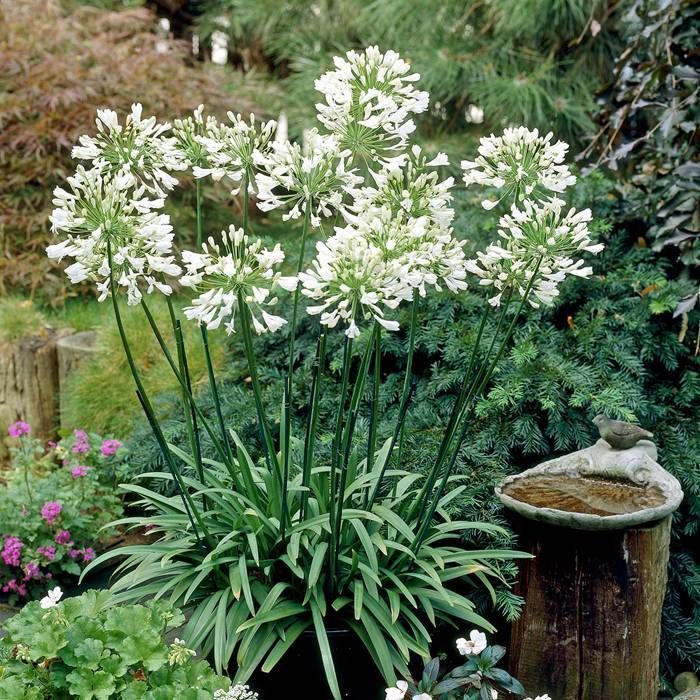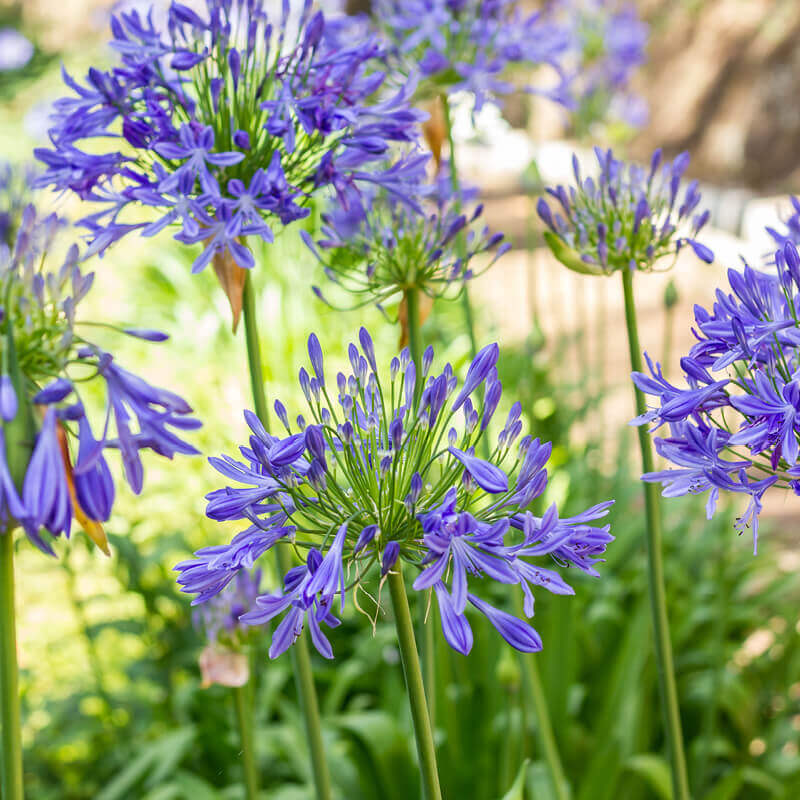Magnificent Agapanthus: Enhancing Your Yard's Elegance
Magnificent Agapanthus: Enhancing Your Yard's Elegance
Blog Article
Understanding the Art of Agapanthus Treatment: Important Steps for Healthy And Balanced Growth and Vibrant Blooms
In the realm of cultivation, the growing of agapanthus stands as a rewarding undertaking for those who seek to nurture these sophisticated blooming plants. From selecting the appropriate range to mastering pruning techniques, the trip towards cultivating growing agapanthus plants is diverse and holds the essential to unlocking the full possibility of these agricultural treasures.

Selecting the Right Agapanthus Variety

When picking the right Agapanthus variety for your yard, take into consideration factors such as environment viability, bloom shade, and development practice. Furthermore, think about the climate in your region to ensure the Agapanthus selection you choose can thrive in your details conditions. Recognizing the growth habit of different Agapanthus selections is essential for proper positioning within your yard.
Suitable Planting Conditions
Considering the optimal environmental requirements is vital for effective Agapanthus farming. Agapanthus plants are sensitive to cool temperatures and should be safeguarded from frost during winter months.
To make certain healthy growth and vivid blossoms, plant Agapanthus bulbs at a deepness of concerning 2-4 inches and area them 8-12 inches apart. Including organic issue, such as compost, to the dirt can improve drainage and fertility, promoting robust root advancement. Mulching around the base of the plants assists keep dampness and suppresses weed growth. Regular watering is important, particularly throughout the growing period, to maintain the dirt regularly damp yet not saturated.
Watering and Feeding Tips
Maintaining proper wetness levels and providing vital nutrients are essential aspects in the care program for Agapanthus plants. When it comes to watering Agapanthus, it is essential to strike a balance. These plants prefer consistently damp soil however are at risk to root rot if overwatered.
Feeding Agapanthus is vital for promoting healthy and balanced growth and respected flowers. Use a balanced plant food, such as a 10-10-10 formula, in the early springtime as new growth arises. Repeat this application every 6-8 weeks throughout the growing period. Prevent excessive fertilization, as it can bring about lavish vegetation at the cost of flowers. Always comply with the producer's instructions for appropriate dilution and application techniques. By complying with these watering and feeding tips, you can guarantee your Agapanthus plants flourish and produce dynamic, long-lasting blossoms.
Pruning Methods for Agapanthus
Pruning Agapanthus plants at the ideal times and with proper strategies is critical for preserving their health and wellness and promoting optimum development and blooming. The optimal time to trim Agapanthus is in late winter season or early springtime before brand-new development emerges. Beginning by getting rid of any dead or yellowing leaves near the base of the plant. Cut them as short as feasible without damaging the YOURURL.com arising shoots.
Deadheading spent blossoms can likewise reroute the plant's energy into creating even more blooms rather than establishing seeds. If you want to accumulate seeds for propagation, leave some flowers to fully grown and completely dry on the plant.
Remember to make use of clean, sharp tools to make exact cuts and reduce the threat of introducing illness. Agapanthus. Normal trimming will help maintain your Agapanthus looking cool and healthy and balanced while guaranteeing a bountiful screen of attractive blooms
Taking Care Of Usual Bugs and Conditions
After guaranteeing proper trimming methods for Agapanthus, it is important to deal with usual parasites and illness that can affect the wellness and click this link vigor of these plants. One usual bug that impacts Agapanthus is the Agapanthus gall midge.
One more typical issue is fungal leaf spot, which presents as dark lesions on the leaves. To avoid fungal conditions, make certain good air blood circulation around the website link plants, avoid overhanging watering, and eliminate any infected leaves quickly. Additionally, Agapanthus plants can experience origin rot if they are grown in inadequately draining soil. To stop this, plant Agapanthus in well-draining dirt and stay clear of overwatering. By being watchful and taking prompt action versus pests and illness, you can help your Agapanthus plants flourish and create vibrant blooms.

Verdict
To conclude, mastering the art of agapanthus treatment involves choosing the right selection, providing perfect planting conditions, correct watering and feeding, suitable trimming methods, and dealing with usual insects and conditions. By complying with these crucial steps, you can ensure healthy and balanced growth and vibrant blossoms for your agapanthus plants. Keep in mind to consistently monitor and maintain your plants to advertise their overall health and durability.
To guarantee healthy development and dynamic blossoms, plant Agapanthus bulbs at a depth of regarding 2-4 inches and space them 8-12 inches apart. By complying with these watering and fertilizing tips, you can guarantee your Agapanthus plants prosper and produce vivid, lasting blossoms.
One usual parasite that affects Agapanthus is the Agapanthus gall midget. In addition, Agapanthus plants can experience from root rot if they are grown in improperly draining dirt. By complying with these crucial steps, you can make certain healthy growth and vibrant flowers for your agapanthus plants.
Report this page